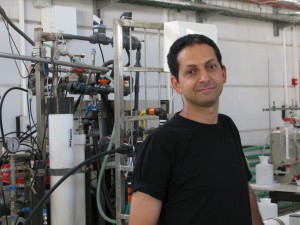
Dr. Moshe Herzberg works in the Department of Desalination and Water Treatment at the Zuckerberg Institute for Water Research in Israel. He received a Bachelor’s of Science in Chemical Engineering from the Technion-Israel Institute of Technology in 1995 and a Ph.D. in Agricultural Engineering from the Technion-Israel Institute of Technology in 2003. Since 1998, Dr. Herzberg has studied bacterial biofilms: both bioremediation with fluidized bed biofilm reactors and biofouling of Reverse Osmosis (RO) membranes are of his major research interests.
“Biofouling of Membranes used in the Treatment of Water”
Co-Hosted by: Richard Albertini and Alec Eidelman
For efficient biofouling control of membranes used for water and wastewater treatement, the viscoelastic characteristics of the biofilm matrix, the extracellular polymeric substances (EPS) as well as their adhesion and cohesion properties should be determined. In addition, studying of the interactions between “anti-biofouling” modified surfaces and EPS enables us to define the mechanisms responsible for biofouling reduction. Under realistic environmental conditions, monitoring biofouling propensity of membranes used for water treatment should also be possible by defining the adhesive properties of the prospective fouling EPS. In our lab, we are studying the above mentioned EPS effects and properties using quartz crystal microbalance with dissipation monitoring (QCM-D):
- We define how aquatic conditions as well as polysaccharides content affect EPC viscoelastic and adherence properties.
- We correlate between the operational conditions of membrane bioreactors (MBRs), EPS produced and their propensity to foul the UF membrane.
- We study the interactions between MBR EPS and zwitterionic grafted polymer brushes, where we elucidate the mechanisms involved in a drastic reduced EPS adhesion.
Dr. Moshe Herzberg’s articles on Biofouling:
Biofouling of reverse osmosis membranes: Role of biofilm-enhanced osmotic pressure
E. Coli Effects of Biofouling:
Motility influences biofilm architecture in Escherichia coli
YdgG (TqsA) Controls Biofilm Formation in Escherichia coli K-12 through Autoinducer 2 Transport
Leave a Reply